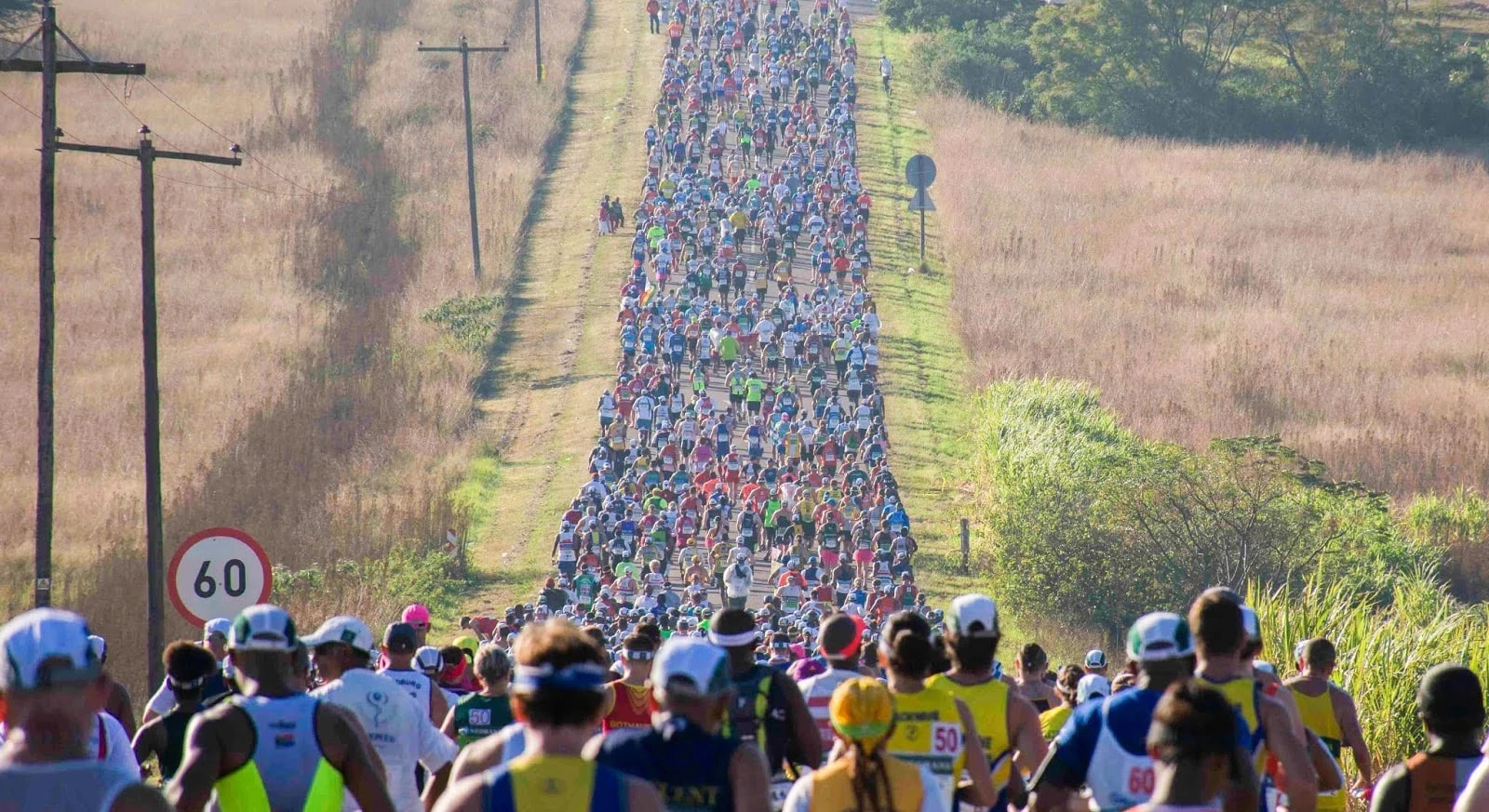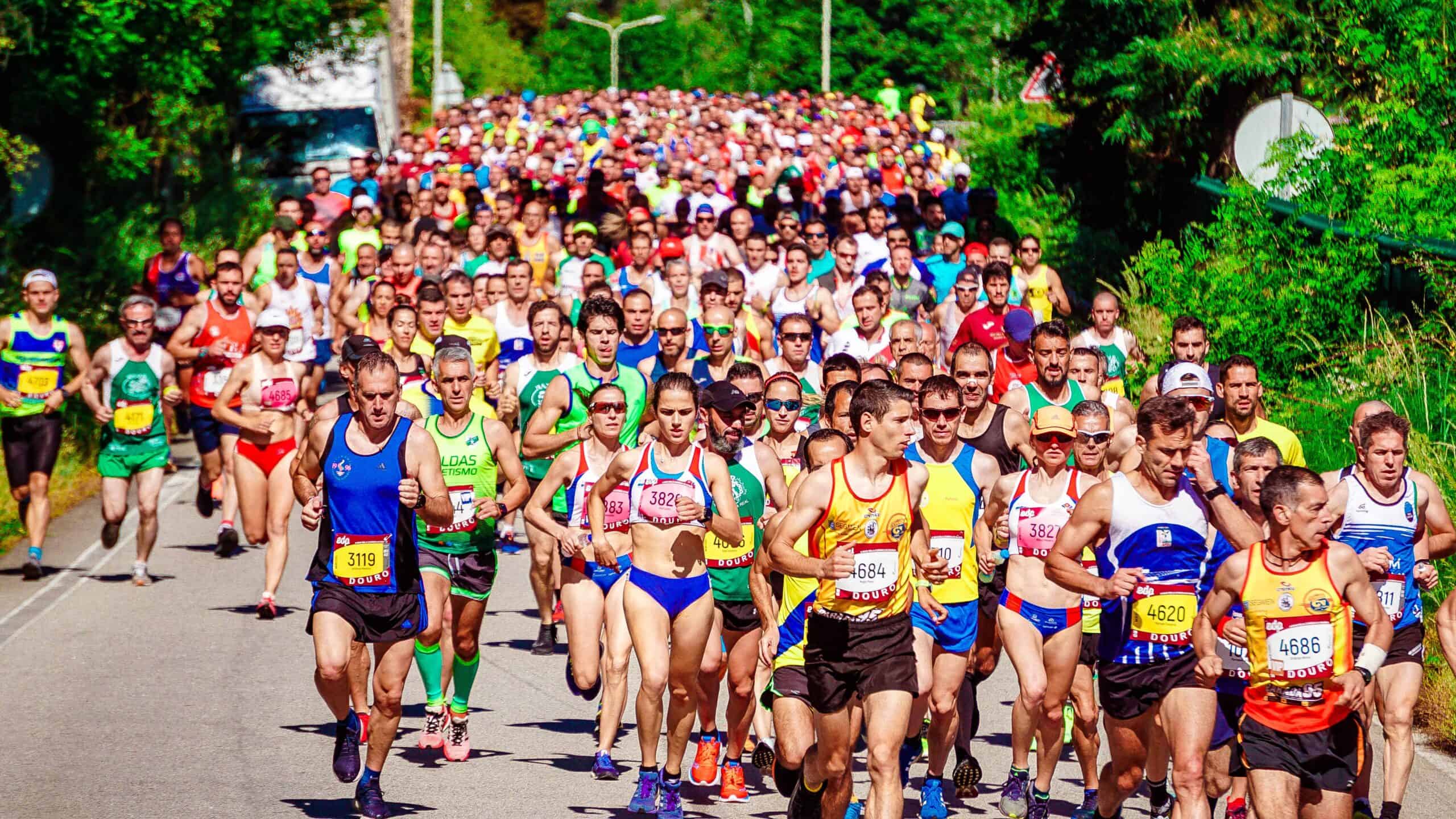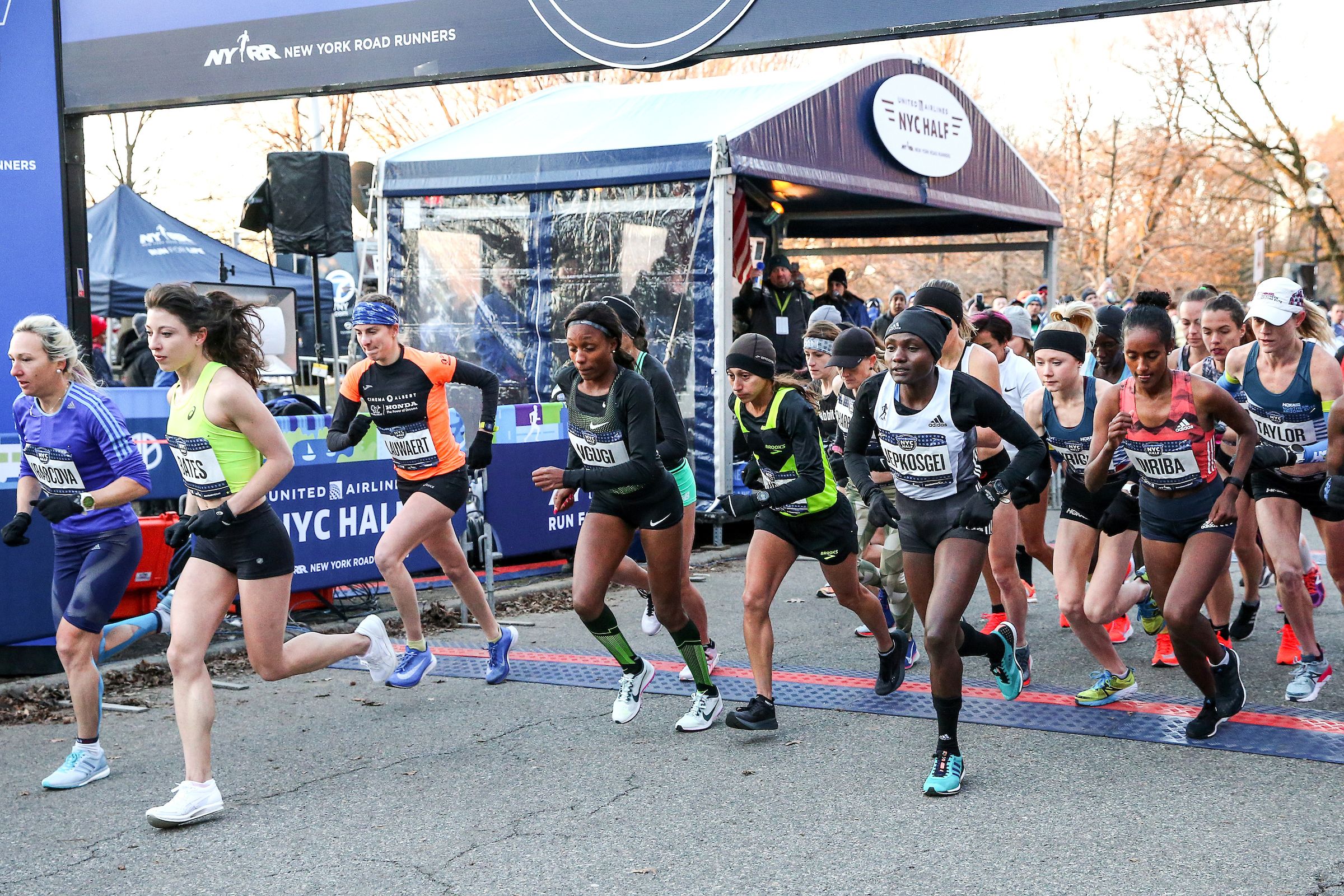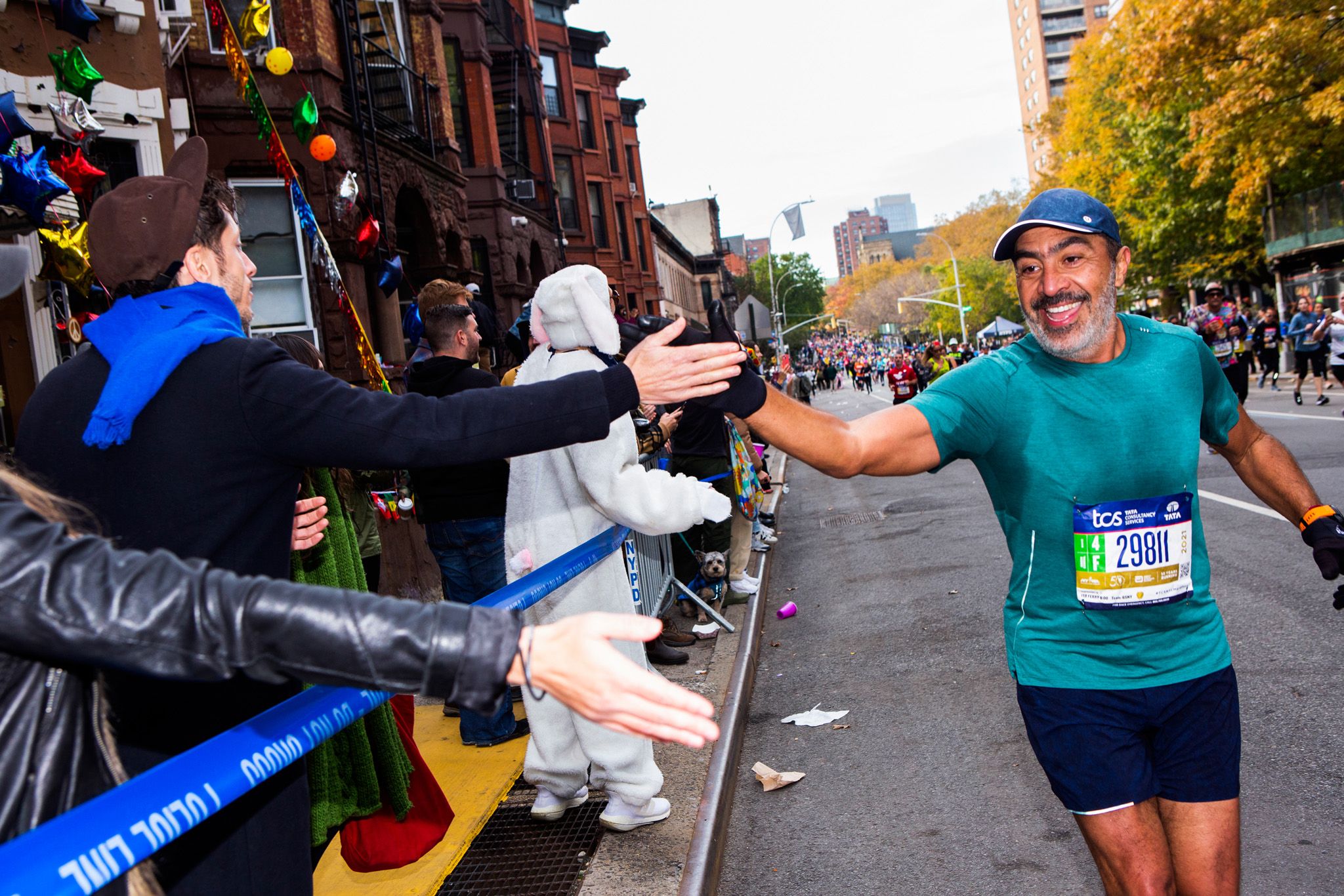

Featured
How Far Is A Marathon Run
Modified: January 22, 2024
Discover how far a marathon run truly is and learn all about this challenging race. Featured in our comprehensive guide.
Introduction
Welcome to the world of marathons – the ultimate test of endurance and the epitome of human achievement. For centuries, marathons have captivated both athletes and spectators alike, pushing boundaries and inspiring individuals to go the distance. From the ancient origins of the marathon to the modern-day racing events, this article will take you on a journey through the fascinating world of marathon running.
Marathons have gained immense popularity in recent years, with millions of participants and spectators engaging in these extraordinary events around the world. The allure of marathons lies in their ability to challenge individuals physically, mentally, and emotionally. Whether you’re a seasoned runner or new to the sport, completing a marathon is a remarkable accomplishment that demands discipline, dedication, and determination.
In this article, we will delve into the history of marathons, explore the significance of the Olympic marathon, and uncover the distance of a marathon. We will also provide insights into the training process for a marathon, including helpful tips to prepare you for the race. Additionally, we will take a closer look at some of the most famous marathons held globally and the unique experiences they offer.
Whether you aspire to run a marathon, admire those who do, or simply want to learn more about the fascinating world of long-distance running, this article will provide you with a comprehensive and engaging look at marathons. So, lace up your running shoes, join us on this adventure, and discover how far you can go.
Understanding a Marathon
A marathon is a long-distance running race with a distance of 42.195 kilometers, or 26.2 miles. It is often considered one of the most challenging road racing events in the world. The race requires both physical endurance and mental fortitude as participants strive to complete the distance within a specified timeframe.
Marathons are characterized by their demanding nature and the sheer determination required to cross the finish line. Runners push their bodies to the limit, testing their endurance over a grueling course that often includes varying terrain and weather conditions.
Unlike shorter races such as sprints or middle-distance events, marathons demand a different level of preparation and strategy. They require not only physical fitness but also mental preparation to overcome the inevitable hurdles and fatigue that arise during the race.
Marathons can be seen as a metaphor for life itself, where participants encounter highs and lows, triumphs and struggles. The journey of training for and running a marathon teaches individuals valuable life lessons such as perseverance, discipline, and the ability to push beyond one’s limits.
Furthermore, marathons have a unique ability to bring people together from different walks of life. Participants often run in support of charitable causes or to honor the memory of loved ones. The spirit of camaraderie and shared achievement creates an extraordinary sense of community among runners.
Understanding the essence of a marathon goes beyond the physical act of running. It involves embracing the dedication, determination, and passion that drives individuals to take on this profound challenge. Whether it’s racing against the clock or conquering personal goals, the marathon experience is a testament to the indomitable spirit of the human race.
Historical Background of Marathons
The history of marathons dates back to ancient times and is rooted in Greek mythology. The origin of the marathon can be traced back to the legendary story of Pheidippides, a messenger from ancient Greece.
According to the ancient tale, during the Battle of Marathon in 490 BC, Pheidippides was tasked with delivering a message to Athens, approximately 42 kilometers away, to announce the victory over the Persians. Legend has it that he ran the entire distance without stopping to deliver the news before collapsing and passing away from exhaustion.
This mythological event became the inspiration for the modern-day marathon race. It was not until the late 19th century, however, that organized marathons started to gain popularity. The first official marathon race took place during the inaugural modern Olympic Games held in Athens in 1896. The distance of the race was set to match the legendary run of Pheidippides.
Since then, marathons have become synonymous with the Olympic Games and have been a staple of the event. The Olympic marathon holds immense prestige and has showcased some of the most remarkable athletic feats in history. Iconic moments, such as Abebe Bikila of Ethiopia winning the marathon barefoot in the 1960 Rome Olympics, and Joan Benoit Samuelson becoming the first-ever women’s Olympic marathon champion in 1984, have left a lasting impact on the sport.
In addition to its Olympic association, marathons gained popularity all around the world, evolving into major events that attract professional and amateur runners alike. From the Boston Marathon, the oldest annual marathon held since 1897, to the Berlin Marathon known for its fast course and world records, marathons have become culturally significant events in many cities.
Today, marathons serve as a platform for achieving personal goals, raising awareness for various causes, and promoting health and fitness. These races continue to inspire individuals to push their limits and celebrate the human spirit. The historical and symbolic significance of marathons has made them a cherished part of our global sporting heritage.
The Olympic Marathon
The Olympic Marathon is undoubtedly one of the most prestigious and celebrated events in the world of athletics. As one of the original Olympic disciplines, the marathon has a rich history and holds a special place in the hearts of athletes and spectators alike.
The modern Olympic Marathon, which commemorates the legendary run of Pheidippides, was first introduced during the inaugural modern Olympic Games in Athens, Greece, in 1896. The race spans a distance of 42.195 kilometers (26.2 miles), symbolic of the distance Pheidippides ran from the battlefield of Marathon to Athens to deliver his message of victory.
Since its inception, the Olympic Marathon has captivated audiences with its displays of exceptional athleticism and moments of triumph. The race has produced memorable stories that have become part of Olympic folklore, igniting passion and inspiration for generations of athletes.
Throughout its history, the Olympic Marathon has witnessed extraordinary performances that have left an indelible mark on the sport. One such iconic moment occurred in the 1968 Mexico City Olympics when Tanzanian runner John Stephen Akhwari, injured and in pain, embodied the spirit of perseverance by crossing the finish line despite a serious fall earlier in the race.
Another historic milestone in the Olympic Marathon came in the 1984 Los Angeles Olympics when Joan Benoit Samuelson claimed the gold medal, becoming the first-ever women’s Olympic marathon champion. Her victory not only signaled a breakthrough for women’s distance running but also inspired countless female athletes to follow in her footsteps.
The Olympic Marathon transcends the boundaries of sport, symbolizing unity, resilience, and the pursuit of excellence. It brings together athletes from diverse backgrounds and nations, highlighting the universality of human achievement and the power of the Olympic spirit.
In recent years, the Olympic Marathon has expanded to include various categories, such as wheelchair racing and visually impaired competitions, allowing athletes with disabilities to showcase their skills and compete at the highest level.
Hosting the Olympic Marathon is a monumental occasion for any city, as it signifies the global celebration of sport and the opportunity to showcase the host country’s culture and values. The event draws massive crowds of spectators who cheer on the athletes, creating an electric atmosphere that adds to the allure and excitement of the race.
Overall, the Olympic Marathon stands as a testament to the pinnacle of athletic achievement and the embodiment of human potential. It continues to inspire millions worldwide, reminding us of the enduring legacy and timeless magic of the Olympic Games.
The Distance of a Marathon
The distance of a marathon is standardized at 42.195 kilometers, or 26.2 miles. This specific distance was established in 1908 during the London Olympic Games to accommodate the Royal Family’s request to start the race at Windsor Castle and finish in front of the royal box at the Olympic Stadium.
Although the marathon distance has evolved over time, it is rooted in the historical significance of the legendary run of Pheidippides, the messenger from ancient Greece. According to popular mythology, Pheidippides ran from the battlefield of Marathon to Athens, approximately 42 kilometers away, to deliver the news of victory.
While marathons predominantly adhere to the standardized distance, it is worth noting that some variations exist. Ultra-marathons, for example, exceed the standard marathon distance and can range from 50 kilometers to several hundred kilometers. Additionally, certain races may deviate slightly from the 42.195-kilometer measurement due to course logistics or historical traditions.
For most marathon runners, completing the 26.2-mile distance is a monumental physical and mental achievement. The race demands extensive training, endurance, and careful pacing to cover the distance within a specific time frame.
Measuring a marathon course accurately is crucial to maintain fairness and consistency across different races. Numerous technologies are employed to ensure precise measurements, including the use of calibrated bicycles, GPS devices, and satellite imagery.
Marathon distances are marked along the course to help runners track their progress and maintain a steady pace. Kilometer or mile markers placed at regular intervals allow participants to gauge their speed and adjust their effort accordingly.
Each mile or kilometer completed in a marathon represents a significant milestone and brings runners closer to the ultimate goal of finishing the race. Many races also have designated cheering stations or spectator areas at key points along the course to provide encouragement and support as participants tackle the grueling distance.
Running a marathon is often seen as a personal challenge, as individuals strive to conquer the distance for various reasons. For some, it marks a significant achievement in their fitness journey, while others may use it as a platform to raise funds for charities or honor the memory of loved ones.
Regardless of the motivation, the distance of a marathon represents a symbolic test of one’s physical and mental strength. Crossing the finish line after 26.2 miles is an accomplishment that brings a sense of pride, accomplishment, and an everlasting memory of a remarkable personal triumph.
Training for a Marathon
Training for a marathon is a meticulous and disciplined process that requires careful planning and preparation. It involves gradually building strength, endurance, and mental resilience to tackle the grueling 26.2-mile distance. Whether you’re a seasoned runner or a novice, following a well-designed training program is essential to maximize your chances of success.
The key to effective marathon training lies in finding the right balance between mileage, speed work, and recovery. It is crucial to gradually increase your weekly mileage to avoid overtraining and the risk of injury. Most training plans span several months, allowing runners to progressively build up their endurance and adapt to the demands of the marathon distance.
A typical training program includes a combination of long runs, tempo runs, interval sessions, and easy recovery runs. Long runs are the cornerstone of marathon training and are designed to help you build endurance by gradually increasing your mileage each week. Tempo runs focus on maintaining a challenging but sustainable pace, while interval sessions improve speed and overall cardiovascular fitness.
In addition to the physical aspect, marathon training also requires mental preparation. Long runs can be mentally demanding, and developing strategies to stay motivated and focused during training sessions is important. Setting realistic goals, cultivating mental toughness, and visualizing success can greatly enhance your training experience.
It’s important to remember that everyone’s training journey is unique, and what works for one person may not work for another. Factors such as age, fitness level, and previous running experience should be taken into consideration when designing a training plan. Consulting with a running coach or seeking advice from experienced runners can provide valuable insights and guidance tailored to your specific needs.
As you progress through your training program, proper nutrition and recovery become essential. Fuelling your body with nutritious foods and staying hydrated will support your training efforts. Adequate rest, sleep, and cross-training activities such as yoga or strength training can help prevent injuries and optimize performance.
Training for a marathon also entails learning the art of pacing. Understanding your target race pace and practicing it during training will enable you to maintain a steady rhythm and avoid burning out too early in the race. Incorporating race simulations into your training plan, such as running at your goal pace during long runs, can help develop a sense of pacing and simulate race-day conditions.
Lastly, listening to your body and prioritizing self-care is crucial throughout the training process. Addressing any signs of fatigue, pain, or discomfort promptly can prevent more serious injuries and setbacks. Remember to be patient, trust the process, and celebrate the small victories along the way.
Training for a marathon requires dedication, perseverance, and a willingness to push beyond your comfort zone. By following a well-rounded training plan, nourishing your body, and maintaining a positive mindset, you’ll be well on your way to conquering the marathon distance and achieving your running goals.
Running a Marathon: Challenges and Tips
Running a marathon is an incredible accomplishment that comes with its own unique set of challenges. The physical and mental demands of tackling the 26.2-mile distance can test even the most seasoned runners. However, with proper preparation and a few key strategies, you can overcome these challenges and make your marathon experience a rewarding and memorable one.
One of the biggest challenges in running a marathon is pacing yourself. It’s easy to get caught up in the excitement and adrenaline of the race and start off too fast. Starting too quickly can deplete your energy reserves and lead to fatigue later on. It’s important to stick to your planned pace and maintain a steady rhythm throughout the race.
Another challenge is dealing with fatigue and muscle soreness as the miles add up. Training your body to handle the distance during your preparation is crucial. Incorporating long runs and back-to-back training sessions can help simulate the physical demands of the marathon. Additionally, cross-training activities and strength training can build muscle endurance and reduce the risk of injury.
Mental toughness is equally important when running a marathon. There may come a point during the race when your body wants to quit, and it’s your mental strength that will push you forward. Develop strategies to stay positive and focused, such as breaking the race into smaller milestones or dedicating each mile to someone or something meaningful. Visualizing yourself crossing the finish line and accomplishing your goal can also provide a powerful motivational boost.
Nutrition and hydration play a vital role in marathon running. Proper fueling before, during, and after the race can help maintain energy levels and prevent hitting the proverbial “wall.” Experimenting with different types of sports drinks, gels, and snacks during training will help you find what works best for you. It’s essential to stay hydrated throughout the race, taking advantage of water stations along the course.
One valuable tip is to run with a support system. Whether it’s joining a running club or finding a running buddy, having someone to train with and share the journey can provide motivation and accountability. On race day, having friends and family cheering you on from the sidelines can provide a tremendous boost of encouragement.
Finally, don’t forget to enjoy the experience. Running a marathon is a remarkable accomplishment, and the journey itself is filled with incredible moments. Take the time to soak in the atmosphere, appreciate the spectators, and celebrate your personal achievements. Remember that your journey towards the marathon is as meaningful as crossing the finish line.
Running a marathon is a test of physical and mental endurance, but it is also an opportunity for personal growth and achievement. Embrace the challenges, stay committed to your training, and trust in your abilities. With perseverance and determination, you will overcome the obstacles and emerge stronger on the other side.
Famous Marathons Around the World
Marathons have become immensely popular events across the globe, attracting both professional runners and recreational enthusiasts. These races offer participants a chance to test their limits, experience diverse cultures, and create lasting memories. From storied races with rich traditions to modern marvels, here are some of the most famous marathons held around the world.
The Boston Marathon in the United States is the oldest annual marathon and one of the most prestigious. Established in 1897, it draws elite athletes and amateur runners alike. Known for its challenging course and iconic heartbreak hill, the Boston Marathon is a dream race for many, requiring runners to qualify based on age and gender.
The London Marathon is another iconic race, renowned for its festive atmosphere and scenic route. With a stunning backdrop that includes landmarks like the Tower Bridge and Buckingham Palace, the London Marathon attracts participants from around the world. The race’s charitable aspect also adds to its appeal, as runners often raise funds for various causes.
The Berlin Marathon, held in Germany, is famous for its fast course and has witnessed numerous world records being broken. Runners flock to Berlin in hopes of achieving their personal best times on this flat and scenic route, which winds through the vibrant city streets.
One of the most unique marathons is the Tokyo Marathon held in Japan. With a combination of modern architecture and traditional landmarks, the Tokyo Marathon showcases the dynamic blend of old and new in this thriving metropolis. The event is known for its hospitality and vibrant crowd support.
The New York City Marathon, often called the “marathon of the people,” takes participants on a journey through the city’s five boroughs. With a diverse and enthusiastic crowd of spectators, the race epitomizes the spirit of New York City. The marathon is known for its inclusive approach, welcoming runners of all abilities through a lottery and charity entries.
The Chicago Marathon is renowned for its flat and fast course, making it a favorite among runners aiming for personal records. The course showcases the city’s architectural gems and provides ample crowd support along the route.
Other notable marathons include the Marine Corps Marathon in the United States, the Great Wall Marathon in China, and the Paris Marathon in France. Each of these races offers a unique experience and the opportunity to explore famous landmarks and immerse oneself in the local culture.
Participating in these famous marathons not only allows runners to challenge themselves but also provides a chance to connect with a global community of like-minded individuals. It’s an opportunity to share stories, forge new friendships, and celebrate the resilience of the human spirit.
Whether you’re seeking a scenic course, a historic tradition, or a vibrant race atmosphere, the world’s famous marathons offer something for everyone. These events embody the global passion for long-distance running, creating unforgettable experiences for participants and spectators alike.
Conclusion
Marathons are more than just races; they represent a journey of self-discovery, determination, and the triumph of the human spirit. From the ancient origins of the marathon to the modern-day global events, the allure and significance of marathons have captivated people for centuries.
In this article, we have explored the history of marathons, from their mythological beginnings to their inclusion in the Olympic Games. We have delved into the challenges and rewards of training for and running a marathon, emphasizing the importance of pacing, mental fortitude, and proper nutrition.
Famous marathons around the world provide unique experiences, allowing runners to immerse themselves in diverse cultures and iconic landmarks. From the storied Boston Marathon to the vibrant New York City Marathon, these races create lasting memories and forge connections among participants from all walks of life.
Yet, the true essence of marathons goes beyond the distance and the races themselves. Marathons embody the indomitable spirit of pushing beyond perceived limits, celebrating personal achievements, and fostering a sense of community among runners and spectators alike.
Whether you are a seasoned marathon runner or someone considering taking on the challenge for the first time, marathons offer a remarkable opportunity to test your physical and mental boundaries. They teach us discipline, perseverance, and the rewards that come from dedication and hard work.
So lace up your running shoes, set your sights on the finish line, and embark on an extraordinary journey that will push you beyond your perceived limits. Embrace the challenges, relish the camaraderie, and celebrate the achievement of crossing that marathon finish line – a moment that will stay with you for a lifetime.








